Scottish Surveys Core Questions 2013
The SSCQ gathers survey responses from identical questions in the Scottish Crime and Justice Survey, the Scottish Health Survey and the Scottish Household Survey into one output. SSCQ provides reliable and detailed information on the composition, characteristics and attitudes of Scottish households and adults across a number of topic areas including equality characteristics, housing, employment and perceptions of health and crime, and enables detailed sub-national analysis.
This document is part of a collection
2 Core Crime and Police Questions
This chapter provides SSCQ data on public perceptions of crime and policing in 2013.
All reported differences are statistically significant unless otherwise stated.
Local Crime Rate
Respondents who had lived in their current neighbourhood for 2 or more years were asked how they perceive the crime rate in their area to have changed over the past year. The choices were 'a lot less', 'a little less', 'about the same', 'a little more', 'a lot more' crime, or 'don't know'. Responses were grouped into three groups for analysis:
- 'a lot less', 'a little less' or 'about the same'
- 'a little more' or 'a lot more'
- 'don't know'[17]
The preferred source of statistics on time series of the perception of crime is the Scottish Crime and Justice Survey (SCJS).[18] The SCJS 2012-13 found just over three-quarters (76%) of adults perceived the crime rate in their local area to have stayed the same or reduced in the past two years, up from 69% in 2008/09.
The larger sample size of the SSCQ improves the capacity for analysis of population sub-groups and so the SSCQ is the preferred source for comparison across demographic groups or sub-national areas (see section 2.1).
A comparison of estimates from data pooled from the SCJS 2012-13 and estimates in SSCQ 2013 is provided in Annex B.
Confidence in the police
Survey respondents, regardless of whether they had ever been in contact with the police, were asked how confident they were in the ability of the police in their local area to undertake specific aspects of police work.
The following sections provide detailed analyses of the following six questions across a wide range of subgroups relating to confidence in the ability of the police:
A. prevent crime (section 2.2.2)
B. respond quickly to appropriate calls and information from the public (section 2.2.3)
C. deal with incidents as they occur (section 2.2.4)
D. investigate incidents after they occur (section 2.2.5)
E. solve crimes (section 2.2.6)
F. catch criminals (section 2.2.7)
Response options were 'very', 'fairly', 'not very', 'not at all' or 'don't know'. Responses were grouped into three groups for analysis:
- 'very' or 'fairly' confident
- 'not very' or 'not at all' confident
- 'don't know'[19]
Measuring public perceptions of confidence in the ability of police in local areas in specific aspects of their work helps contextualise one of the aims of the Police and Fire Reform (Scotland) Act 2012, which saw the eight legacy Scottish police forces reform to create the Police Service of Scotland, on 1 April 2013. The forthcoming publication of SSCQ 2012 data will provide a pre-reform baseline result to support assessments of the change.
The preferred source for these statistics is the Scottish Crime and Justice Survey (SCJS), which provides a time series back to 2008-09, the results of which are used for a National[20] and Justice Outcome Indicators[21]. The changes in SCJS respondents' confidence levels between the 2008-09 and 2012-13 surveys were positive and statistically significant across all six of these questions on aspects of confidence in the police.
The larger sample size of the SSCQ improves the capacity for analysis of population sub-groups and so the SSCQ now provides the preferred source for comparison across demographic groups or geographic area results.
A comparison of estimates from SCJS and SSCQ is provided in Annex B.
2.1 Perception of the local crime rate
More than three quarters of respondents (77%) perceived the crime rate in their local area was either 'about the same', 'a little less' or 'a lot less' than in the previous year. 12% perceived 'a little more' and 4.3% 'a lot more' crime.
While there is lots of consistency in results across a range of variables and population sub-groups, some significant differences emerge. In terms of geography, there were significant differences between people from the most deprived fifth of areas and least deprived fifth, with 73% and 81% perceiving a reduction or no change in crime rate respectively. Similarly, people in large urban areas (76%) were significantly less likely to say that crime had fallen or remained the same compared to people in accessible (81%) or remote rural areas (80%).
In relation to local authorities, people in Shetland, Falkirk and Eilean Siar were more likely than the Scottish average to say that crime in their local area had fallen or remained the same, while people in Midlothian were less likely than the Scottish average to feel that crime in their local area had fallen or remained the same. See Figure 5.
Figure 5: Proportion of people who perceived a reduction or no change in local crime rate by Local Authority
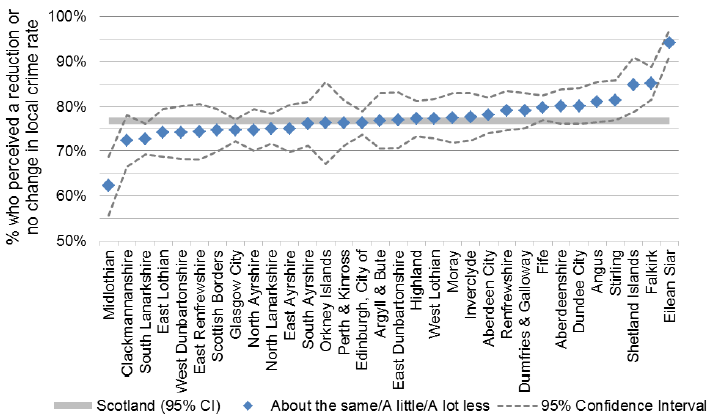
The following groups of people were significantly less likely to say that crime in their local area had fallen or remained the same compared to the Scottish average (77%): single parents (68%), those following a divorce / the dissolution of a civil partnership (72%), those living in social rented accommodation (72%), those without access to a car (72%), women aged 35-44 (73%), smokers (74%), those with no qualifications (74%), people with limiting long-term health conditions (74%).
Conversely, significant proportions of young (age 16-24) and older (age 75+) men perceived an above-average reduction in local crime rate (83% and 82% respectively), as did people with a degree or professional qualification (80%) and those owning two cars (80%).
No significant differences were found when the results were examined broken down by a range of other variables, including: ethnicity, economic activity, country of birth, sexual orientation or religion.
Table 2.1: Perception of local crime rate
| Response % | Totals | |||
|---|---|---|---|---|
| About the same/ A little/A lot less | A little/ A lot more |
Adults | Sample | |
| All | 76.8 | 16.7 | 3,874,400 | 17,398 |
| Scottish Index of Multiple Deprivation | ||||
| 1: most deprived fifth of households | 72.9 | 20.7 | 757,100 | 3,341 |
| 2 | 72.7 | 20.9 | 768,500 | 3,598 |
| 3 | 76.8 | 16.4 | 800,400 | 3,795 |
| 4 | 80.3 | 13.9 | 792,900 | 3,663 |
| 5: least deprived fifth of households | 81.2 | 11.9 | 755,400 | 3,001 |
| Detailed Tenure | ||||
| Owned outright | 78.5 | 15.4 | 1,220,000 | 6,188 |
| Mortgaged | 78.7 | 15.3 | 1,414,000 | 5,366 |
| Social rented | 71.8 | 21.7 | 844,600 | 4,167 |
| Private rented | 75.7 | 15.5 | 344,800 | 1,465 |
| Unknown rented | 78.5 | 15.5 | 41,100 | 183 |
| Respondent Economic Activity | ||||
| In employment | 77.2 | 16.7 | 2,130,700 | 8,647 |
| Unemployed | 73.4 | 22.6 | 143,900 | 576 |
| Inactive | 76.6 | 16.3 | 1,597,800 | 8,167 |
| Ethnic Group | ||||
| White: Scottish | 76.9 | 17.3 | 3,191,400 | 14,439 |
| White: Other British | 77.1 | 13.8 | 448,600 | 2,070 |
| White: Polish | 72.5 | 13.3 | 36,600 | 127 |
| White: Other* | 77.3 | 13.5 | 99,500 | 418 |
| Asian** | 74.4 | 16.3 | 63,500 | 209 |
| All other ethnic groups*** | 69.1 | 13.6 | 32,100 | 124 |
Footnotes
Ethnic Groups
* 'White: Other' includes ‘White: Irish’, ‘White: Gypsy/Traveller’ and ‘White: Other White Ethnic Group’
** 'Asian' includes the categories Asian, Asian Scottish or Asian British
*** 'All other ethnic groups' includes categories within the 'Mixed or Multiple Ethnic Group', ‘African’, ‘Caribbean or Black’, and ‘Other Ethnic Group’ sections.
2.2 Confidence in the police: overview of indicators
More than half of adults stated they were 'very' or 'fairly' confident in the police to do specific elements of their job in local areas in each of the six aspects of policing examined, as shown in Figure 6.
Figure 6: Scotland-level police confidence indicators, ranked by proportion of people responding 'very' or 'fairly confident'
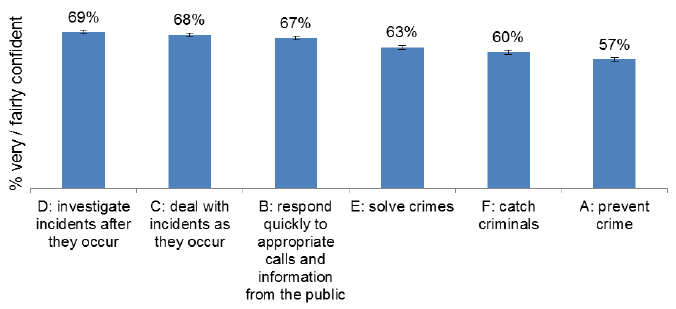
Among local authorities, results varied across the six indicators. Local authority results are presented in charts in the relevant sections listed on page 74, and in supplementary tables 2.2 to 2.7.[22]
'Very' or 'fairly' confident in the police
Several of the breakdowns by equality measures identified statistically significant differences between population sub-groups stating they were 'very' or 'fairly' confident in the police and the Scottish average. For results from specific questions see the sections listed on page 24 and supplementary tables 2.2 to 2.7. Results varied across each of the six police confidence indicators, however a range of overall themes emerged:
Statements of police confidence varied significantly with deprivation. For all six indicators, adults living in more deprived areas (Scottish Index of Multiple Deprivation SIMD quintiles 1 and 2) reported being significantly less confident in the police than the Scottish average (see for example question A in Figure 7). Conversely, adults living in SIMD quintile 4 reported greater confident in the police than the Scottish average in five out of the six indicators (A, C, D, E, F), and adults living in the least deprived SIMD quintile 5 expressed greater confidence in three out of the six indicators (A, B, E). See for example question A in Figure 7.
Social tenants reported significantly lower conficence in the police than the Scottish average for all six indicators (see for example indicator A in Figure 7), as did smokers and adults living with limiting long-term health conditions.
Those with low qualifications (O Grade, Standard Grade or equivalent) were significantly less confident for five out of six indicators (A, B, C, E, F), while those with degrees or professional qualifications were significantly more confident than the Scottish average for four out of six indicators (A, B, C, D), see for example indicator A in Figure 7.
For two indicators (A, B), unemployed people were less confident in the police than the Scottish average (see for example question A in Figure 7), while for one indicator (D), this was the case for economically inactive people.
Figure 7: Proportion of adults 'very' / 'fairly' confident or 'not very' / 'not at all' confident in the police to prevent crime (question A) by highest qualification, deprivation, economic activity and household tenure
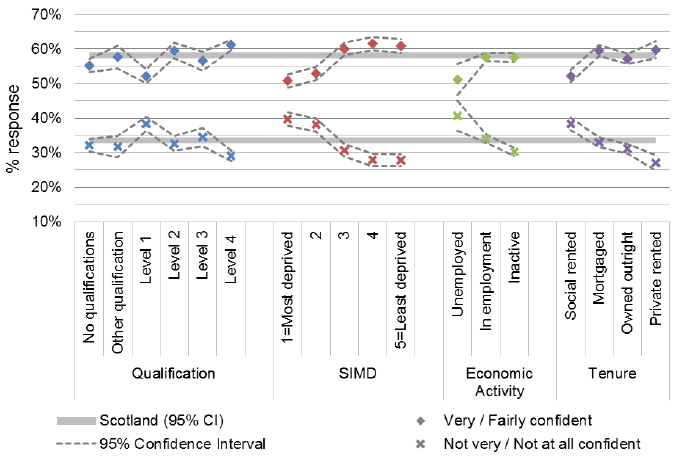
There were no significant differences between respondents stating they were 'very' or 'fairly' confident in the police by sexual orientation across any of the six indicators.
Responses by 'very' or 'fairly' confident did not vary much by ethnic group. There was only one indicator where a small but significant difference was identified between 'very' or 'fairly' confident responses by ethnic group: the 'White: Polish' group were less likely to state they were 'very' or 'fairly' confident in the police to investigate incidents after they occur (section 2.2.5) than the Scottish aveage.
Across other breakdowns such as country of birth or religion there were no significant differences between respondent groups when stating they were 'very' or 'fairly' confident in the police. See for example 'very' or 'fairly' confident responses for question A: "Confidence in the police to prevent crime" presented in Figure 8.
Figure 8: Proportion of adults 'very' / 'fairly' confident or 'not very' / 'not at all' confident in the police to prevent crime (question A) by country of birth, ethnic group and religion
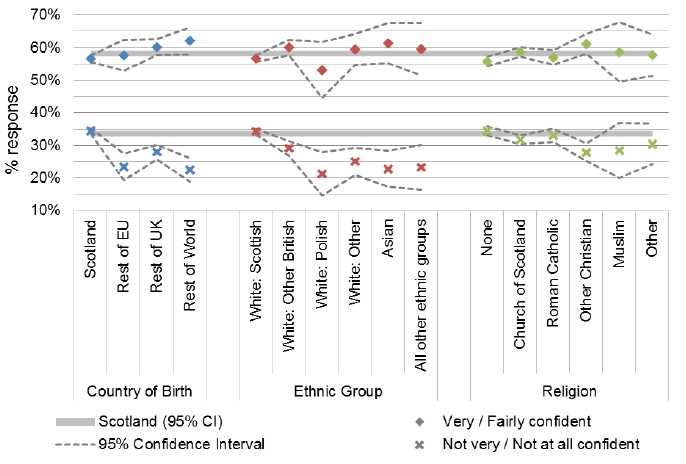
'Not very' or 'not at all' confident in the police
Between one in five and one in three adults responded they were either 'not very' or 'not at all' confident in the police to do specific elements of their job in local areas in each of the six aspects of policing examined, Several of the breakdowns by equality measures identified statistically significant differences between population sub-groups stating they were 'not very' or 'not at all' confident in the police. For results from specific questions see the sections listed on page 24 and supplementary tables 2.2 to 2.7.
Results varied across each of the six police confidence questions. Similar themes as in the 'very' or 'fairly' confident analysis emerged, however several further comparisons surfaced as significantly different (see note on page 31) and are discussed in this section.
As in the previous analysis, levels of police confidence varied significantly with deprivation. For all six questions, adults living in more deprived areas (Scottish Index of Multiple Deprivation SIMD quintiles 1 and 2) reported significantly higher levels of 'not very' or 'not at all' confident than the Scottish average (see for example question A in Figure 7). Adults living in the least deprived SIMD quintile 5 were more confident for all six questions.
Social tenants again reported having significantly less conficent in the police: higher levels of 'not very' or 'not at all' confident than the Scottish average for all six questions (see for example question A in Figure 7), as did smokers and adults living with limiting long-term health conditions.
Those with low qualifications (O Grade, Standard Grade or equivalent) reported higher levels of 'not very' or 'not at all' confident for all six questions, while those with degrees or professional qualifications were lesslikely to give these responses than the Scottish average for all six questions (see for example question A in Figure 7).
For five questions (A to E), unemployed people had higher levels of 'not very' or 'not at all' confident in the police than the Scottish average (see for example question A in Figure 7).
There were again no significant differences between sexual orientation groups of respondents stating they were 'not very' or 'not at all' confident in the police across any of the six questions.
When examining 'not very' or 'not at all' confident responses by ethnicity, people identifying as 'White: Other British', 'White: Other' or one of 'All other ethnic groups' reported significantly lower levels of 'not very' or 'not at all' confident than the Scottish average for all six questions.
Furthermore, people identifying as 'White: Polish' or 'Asian' were significantly more confident in the police than the Scottish average in five of the six questions. In the sixth question (D: "…investigate incidents after they occur" for Polish respondents, and E: "…solve crimes" for Asian respondents), these subgroups were not significantly different than the rest of the population.
Similarly, for all six questions, people born outside Scotland (rest of UK, EU and world) were significantly more confident in the police than the Scottish average, reporting lower levels of 'not very' or 'not at all' confident responses. See for example 'not very' or 'not at all' confident responses for question A: "Confidence in the police to prevent crime" presented in Figure 8. For all questions see supplementary tables 2.2 to 2.7.[23]
Among religious groups, 'Other Christian' respondents also consistently reported lower levels of 'not very' or 'not at all' confident in the police compared to the Scottish average. There were no significant differences for other religious groups. See for example 'not very' or 'not at all' confident responses for question A: "Confidence in the police to prevent crime" presented in Figure 8, and for all questions see supplementary tables 2.2 to 2.7.
Note: The sum of proportions answering "Very/Fairly confident" and "Not very/Not at all confident" to these questions is less than 100%. This is because a proportion of respondents refused to answer some or all questions in this set, or did not express a preference. These cases have not been excluded from the analysis in line with reporting of these indicators from the SCJS.
This also affects the width of the confidence intervals for every estimate. Estimates closer to 50% carry wider confidence intervals (e,g, 'very' / 'fairly' confident responses in this chapter) than estimates closer to 0% or 100% (e.g. 'not very' / 'not at all' confident responses).[24]
2.2.2 Confidence in the police to prevent crime
Of the six police confidence indicators, the confidence of respondents in police to prevent crime was the lowest overall, at 57%.
The proportion of respondents reporting that they were "very" or "fairly" confident in Clackmannanshire (39%) and Midlothian (49%) was significantly below the Scottish average, while Shetland (71%), Orkney (72%) and Eilean Siar (75%) reported significantly higher levels (see Figure 9).
Figure 9: Proportion of adults in each Local Authority confident in police to prevent crime
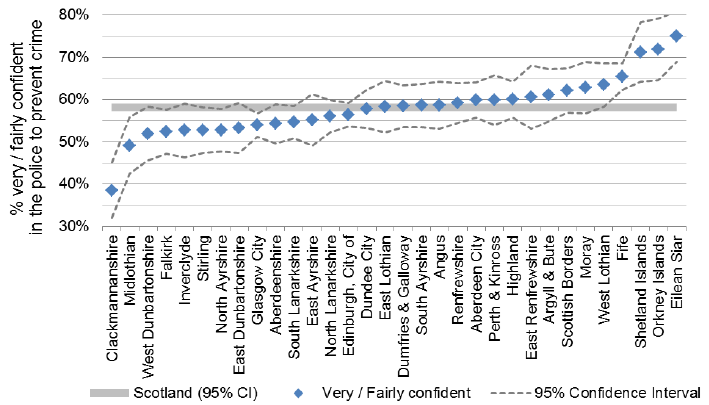
Table 2.2: Confidence in police to prevent crime
| Response % | Totals | |||
|---|---|---|---|---|
| Very/ Fairly confident |
Not very/ Not at all confident |
Adults | Sample | |
| All | 57.3 | 32.8 | 4,398,900 | 19,395 |
| Scottish Index of Multiple Deprivation | ||||
| 1: most deprived fifth of households | 50.8 | 39.7 | 860,800 | 3,738 |
| 2 | 52.9 | 38.1 | 872,400 | 3,982 |
| 3 | 60.0 | 30.6 | 908,400 | 4,217 |
| 4 | 61.5 | 27.9 | 895,500 | 4,081 |
| 5: least deprived fifth of households | 60.8 | 27.8 | 861,800 | 3,377 |
| Detailed Tenure | ||||
| Owned outright | 57.1 | 31.2 | 1,255,900 | 6,365 |
| Mortgaged | 59.6 | 33.0 | 1,526,300 | 5,769 |
| Social rented | 52.2 | 38.4 | 952,800 | 4,637 |
| Private rented | 59.7 | 27.1 | 604,400 | 2,372 |
| Unknown rented | 65.8 | 23.1 | 49,800 | 222 |
| Respondent Economic Activity | ||||
| In employment | 57.6 | 34.0 | 2,436,300 | 9,776 |
| Unemployed | 51.1 | 40.6 | 184,500 | 732 |
| Inactive | 57.5 | 30.3 | 1,775,800 | 8,877 |
| Ethnic Group | ||||
| White: Scottish | 56.7 | 34.3 | 3,499,200 | 15,668 |
| White: Other British | 60.1 | 29.1 | 538,600 | 2,426 |
| White: Polish | 53.1 | 21.2 | 55,400 | 182 |
| White: Other* | 59.5 | 25.1 | 152,800 | 594 |
| Asian** | 61.3 | 22.8 | 100,100 | 327 |
| All other ethnic groups*** | 59.6 | 23.3 | 50,100 | 186 |
Footnotes
Ethnic Groups
* 'White: Other' includes ‘White: Irish’, ‘White: Gypsy/Traveller’ and ‘White: Other White Ethnic Group’
** 'Asian' includes the categories Asian, Asian Scottish or Asian British
*** 'All other ethnic groups' includes categories within the 'Mixed or Multiple Ethnic Group', ‘African’, ‘Caribbean or Black’, and ‘Other Ethnic Group’ sections.
2.2.3 Confidence in the police to respond quickly to calls and information from the public
Around two thirds of respondents reported being 'very' or 'fairly confident' in the police to respond quickly to appropriate calls and information from the public (67%).
Responses ranged from 55% in Clackmannanshire to 83% in Eilean Saar, with responses in several Local Authorities varying significantly from the Scottish average (see Figure 10).
Figure 10: Proportion of adults in each Local Authority confident in police to respond quickly to calls and information from the public
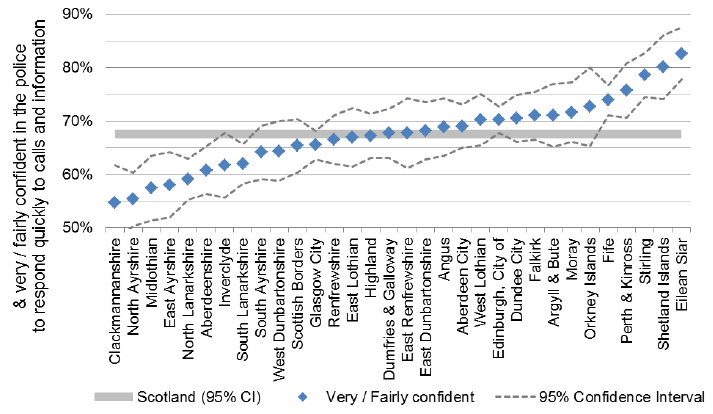
Table 2.3: Confidence in the police to respond quickly to calls and information from the public
| Response % | Totals | |||
|---|---|---|---|---|
| Very/ Fairly confident |
Not very/ Not at all confident |
Adults | Sample | |
| All | 66.8 | 22.8 | 4,398,900 | 19,395 |
| Scottish Index of Multiple Deprivation | ||||
| 1: most deprived fifth of households | 62.9 | 27.2 | 860,800 | 3,738 |
| 2 | 63.9 | 26.3 | 872,400 | 3,982 |
| 3 | 67.5 | 22.4 | 908,400 | 4,217 |
| 4 | 68.8 | 20.8 | 895,500 | 4,081 |
| 5: least deprived fifth of households | 70.7 | 17.6 | 861,800 | 3,377 |
| Detailed Tenure | ||||
| Owned outright | 64.2 | 24.1 | 1,255,900 | 6,365 |
| Mortgaged | 69.8 | 21.9 | 1,526,300 | 5,769 |
| Social rented | 63.3 | 26.9 | 952,800 | 4,637 |
| Private rented | 70.2 | 16.3 | 604,400 | 2,372 |
| Unknown rented | 66.5 | 20.9 | 49,800 | 222 |
| Respondent Economic Activity | ||||
| In employment | 68.2 | 22.8 | 2,436,300 | 9,776 |
| Unemployed | 59.6 | 30.8 | 184,500 | 732 |
| Inactive | 65.6 | 22.0 | 1,775,800 | 8,877 |
| Ethnic Group | ||||
| White: Scottish | 66.3 | 24.5 | 3,499,200 | 15,668 |
| White: Other British | 68.4 | 19.2 | 538,600 | 2,426 |
| White: Polish | 62.8 | 10.9 | 55,400 | 182 |
| White: Other* | 71.9 | 12.9 | 152,800 | 594 |
| Asian** | 68.1 | 12.1 | 100,100 | 327 |
| All other ethnic groups*** | 70.6 | 14.2 | 50,100 | 186 |
Footnotes
Ethnic Groups
* 'White: Other' includes ‘White: Irish’, ‘White: Gypsy/Traveller’ and ‘White: Other White Ethnic Group’
** 'Asian' includes the categories Asian, Asian Scottish or Asian British
*** 'All other ethnic groups' includes categories within the 'Mixed or Multiple Ethnic Group', ‘African’, ‘Caribbean or Black’, and ‘Other Ethnic Group’ sections.
2.2.4 Confidence in the police to deal with incidents as they occur
Around two thirds of respondents reported being 'very' or 'fairly confident' in the police to deal with incidents as they occur (68%). This is the joint-highest rated indicator (not significantly different from section 2.2.5: Confidence in the police to investigate incidents after they occur).
In terms of Local Authorities, responses ranged from 55% in Ayrshire to 86% in Eilean Siar (see Figure 11).
Figure 11: Proportion of adults in each Local Authority confident in police to deal with incidents as they occur
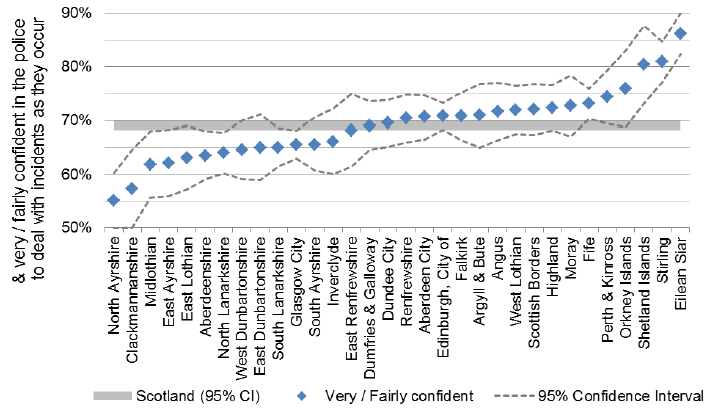
Table 2.4: Confidence in the police to deal with incidents as they occur
| Response % | Totals | |||
|---|---|---|---|---|
| Very/ Fairly confident |
Not very/ Not at all confident |
Adults | Sample | |
| All | 68.3 | 22.4 | 4,398,900 | 19,395 |
| Scottish Index of Multiple Deprivation | ||||
| 1: most deprived fifth of households | 63.3 | 28.0 | 860,800 | 3,738 |
| 2 | 65.3 | 25.1 | 872,400 | 3,982 |
| 3 | 69.9 | 21.1 | 908,400 | 4,217 |
| 4 | 71.7 | 19.4 | 895,500 | 4,081 |
| 5: least deprived fifth of households | 70.8 | 18.4 | 861,800 | 3,377 |
| Detailed Tenure | ||||
| Owned outright | 67.5 | 21.8 | 1,255,900 | 6,365 |
| Mortgaged | 70.8 | 22.4 | 1,526,300 | 5,769 |
| Social rented | 64.3 | 26.5 | 952,800 | 4,637 |
| Private rented | 70.1 | 17.0 | 604,400 | 2,372 |
| Unknown rented | 70.2 | 18.3 | 49,800 | 222 |
| Respondent Economic Activity | ||||
| In employment | 69.2 | 23.0 | 2,436,300 | 9,776 |
| Unemployed | 65.0 | 28.0 | 184,500 | 732 |
| Inactive | 67.3 | 20.9 | 1,775,800 | 8,877 |
| Ethnic Group | ||||
| White: Scottish | 67.9 | 23.8 | 3,499,200 | 15,668 |
| White: Other British | 70.5 | 19.1 | 538,600 | 2,426 |
| White: Polish | 63.7 | 12.3 | 55,400 | 182 |
| White: Other* | 70.4 | 13.6 | 152,800 | 594 |
| Asian** | 67.7 | 14.0 | 100,100 | 327 |
| All other ethnic groups*** | 71.2 | 12.4 | 50,100 | 186 |
Footnotes
Ethnic Groups
* 'White: Other' includes ‘White: Irish’, ‘White: Gypsy/Traveller’ and ‘White: Other White Ethnic Group’
** 'Asian' includes the categories Asian, Asian Scottish or Asian British
*** 'All other ethnic groups' includes categories within the 'Mixed or Multiple Ethnic Group', ‘African’, ‘Caribbean or Black’, and ‘Other Ethnic Group’ sections.
2.2.5 Confidence in the police to investigate incidents after they occur
Of the six police confidence indicators, the confidence in police to investigate incidents after they occur had the highest repoted levels at 69%. Responses ranged from 57% in Clackmannanshire to 85% in Eilean Siar (see Figure 12).
Figure 12: Proportion of adults in each Local Authority confident in police to investigate incidents after they occur
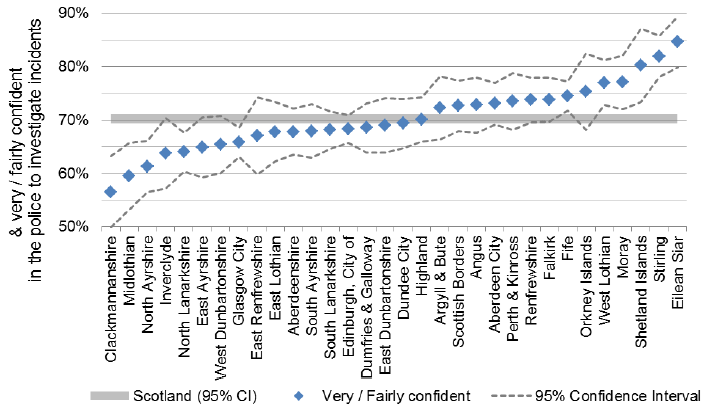
Table 2.5: Confidence in the police to investigate incidents after they occur
| Response % | Totals | |||
|---|---|---|---|---|
| Very/ Fairly confident |
Not very/ Not at all confident |
Adults | Sample | |
| All | 69.4 | 19.7 | 4,398,900 | 19,395 |
| Scottish Index of Multiple Deprivation | ||||
| 1: most deprived fifth of households | 64.8 | 24.6 | 860,800 | 3,738 |
| 2 | 66.5 | 22.8 | 872,400 | 3,982 |
| 3 | 70.6 | 18.8 | 908,400 | 4,217 |
| 4 | 72.9 | 16.8 | 895,500 | 4,081 |
| 5: least deprived fifth of households | 71.8 | 15.7 | 861,800 | 3,377 |
| Detailed Tenure | ||||
| Owned outright | 68.3 | 19.8 | 1,255,900 | 6,365 |
| Mortgaged | 72.7 | 18.9 | 1,526,300 | 5,769 |
| Social rented | 65.4 | 23.4 | 952,800 | 4,637 |
| Private rented | 69.6 | 16.0 | 604,400 | 2,372 |
| Unknown rented | 68.2 | 17.1 | 49,800 | 222 |
| Respondent Economic Activity | ||||
| In employment | 71.2 | 19.9 | 2,436,300 | 9,776 |
| Unemployed | 65.6 | 24.4 | 184,500 | 732 |
| Inactive | 67.2 | 19.0 | 1,775,800 | 8,877 |
| Ethnic Group | ||||
| White: Scottish | 69.5 | 20.8 | 3,499,200 | 15,668 |
| White: Other British | 70.3 | 17.0 | 538,600 | 2,426 |
| White: Polish | 58.7 | 15.2 | 55,400 | 182 |
| White: Other* | 70.0 | 13.4 | 152,800 | 594 |
| Asian** | 65.1 | 14.1 | 100,100 | 327 |
| All other ethnic groups*** | 70.7 | 11.4 | 50,100 | 186 |
Footnotes
Ethnic Groups
* 'White: Other' includes ‘White: Irish’, ‘White: Gypsy/Traveller’ and ‘White: Other White Ethnic Group’
** 'Asian' includes the categories Asian, Asian Scottish or Asian British
*** 'All other ethnic groups' includes categories within the 'Mixed or Multiple Ethnic Group', ‘African’, ‘Caribbean or Black’, and ‘Other Ethnic Group’ sections.
2.2.6 Confidence in the police to solve crimes
63% of respondents reported being 'very' or 'fairly confident' in the police to solve crimes. Responses ranged from 49% in Midlothian to 81% in Eilean Siar, see Figure 13.
Figure 13: Proportion of adults in each Local Authority confident in police to solve crimes
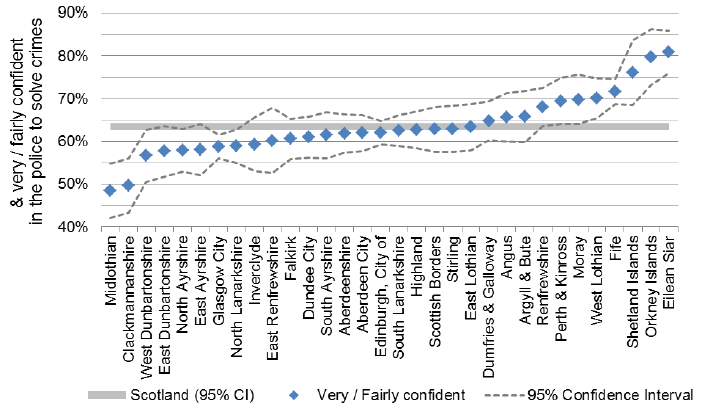
Table 2.6: Confidence in the police to solve crimes
| Response % | Totals | |||
|---|---|---|---|---|
| Very/ Fairly confident |
Not very/ Not at all confident |
Adults | Sample | |
| All | 62.6 | 24.2 | 4,398,900 | 19,395 |
| Scottish Index of Multiple Deprivation | ||||
| 1: most deprived fifth of households | 57.2 | 30.8 | 860,800 | 3,738 |
| 2 | 58.8 | 28.4 | 872,400 | 3,982 |
| 3 | 64.9 | 22.0 | 908,400 | 4,217 |
| 4 | 66.1 | 20.7 | 895,500 | 4,081 |
| 5: least deprived fifth of households | 66.0 | 19.5 | 861,800 | 3,377 |
| Detailed Tenure | ||||
| Owned outright | 61.4 | 23.9 | 1,255,900 | 6,365 |
| Mortgaged | 65.7 | 23.6 | 1,526,300 | 5,769 |
| Social rented | 58.3 | 29.5 | 952,800 | 4,637 |
| Private rented | 63.7 | 18.8 | 604,400 | 2,372 |
| Unknown rented | 68.4 | 16.4 | 49,800 | 222 |
| Respondent Economic Activity | ||||
| In employment | 63.7 | 24.7 | 2,436,300 | 9,776 |
| Unemployed | 59.5 | 29.2 | 184,500 | 732 |
| Inactive | 61.4 | 23.0 | 1,775,800 | 8,877 |
| Ethnic Group | ||||
| White: Scottish | 62.6 | 25.7 | 3,499,200 | 15,668 |
| White: Other British | 64.0 | 20.2 | 538,600 | 2,426 |
| White: Polish | 62.7 | 10.5 | 55,400 | 182 |
| White: Other* | 61.6 | 16.9 | 152,800 | 594 |
| Asian** | 57.9 | 19.2 | 100,100 | 327 |
| All other ethnic groups*** | 63.5 | 16.3 | 50,100 | 186 |
Footnotes
Ethnic Groups
* 'White: Other' includes ‘White: Irish’, ‘White: Gypsy/Traveller’ and ‘White: Other White Ethnic Group’
** 'Asian' includes the categories Asian, Asian Scottish or Asian British
*** 'All other ethnic groups' includes categories within the 'Mixed or Multiple Ethnic Group', ‘African’, ‘Caribbean or Black’, and ‘Other Ethnic Group’ sections.
2.2.7 Confidence in the police to catch criminals
61% of respondents reported being 'very' or 'fairly confident' in the police to catch criminals.
Responses ranged from 48% in Clackmannanshire to 81% in Eilean Siar (see Figure 14).
Figure 14: Proportion of adults in each Local Authority confident in police to catch criminals
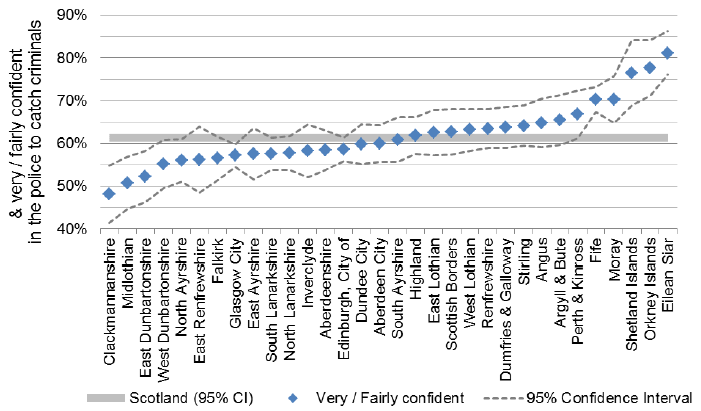
Table 2.7: Confidence in the police to catch criminals
| Response % | Totals | |||
|---|---|---|---|---|
| Very/ Fairly confident |
Not very/ Not at all confident |
Adults | Sample | |
| All | 60.5 | 26.9 | 4,398,900 | 19,395 |
| Scottish Index of Multiple Deprivation | ||||
| 1: most deprived fifth of households | 55.8 | 32.8 | 860,800 | 3,738 |
| 2 | 56.6 | 31.7 | 872,400 | 3,982 |
| 3 | 62.1 | 25.4 | 908,400 | 4,217 |
| 4 | 64.4 | 22.7 | 895,500 | 4,081 |
| 5: least deprived fifth of households | 63.1 | 22.3 | 861,800 | 3,377 |
| Detailed Tenure | ||||
| Owned outright | 58.7 | 26.9 | 1,255,900 | 6,365 |
| Mortgaged | 63.6 | 26.5 | 1,526,300 | 5,769 |
| Social rented | 56.9 | 31.7 | 952,800 | 4,637 |
| Private rented | 61.2 | 21.1 | 604,400 | 2,372 |
| Unknown rented | 66.3 | 19.3 | 49,800 | 222 |
| Respondent Economic Activity | ||||
| In employment | 61.2 | 28.1 | 2,436,300 | 9,776 |
| Unemployed | 57.7 | 30.6 | 184,500 | 732 |
| Inactive | 59.7 | 25.0 | 1,775,800 | 8,877 |
| Ethnic Group | ||||
| White: Scottish | 60.3 | 28.4 | 3,499,200 | 15,668 |
| White: Other British | 62.1 | 23.3 | 538,600 | 2,426 |
| White: Polish | 51.7 | 17.6 | 55,400 | 182 |
| White: Other* | 60.5 | 18.3 | 152,800 | 594 |
| Asian** | 57.5 | 19.5 | 100,100 | 327 |
| All other ethnic groups*** | 65.1 | 13.7 | 50,100 | 186 |
Footnotes
Ethnic Groups
: Other White Ethnic Group’
** 'Asian' includes the categories Asian, Asian Scottish or Asian British
*** 'All other ethnic groups' includes categories within the 'Mixed or Multiple Ethnic Group', ‘African’, ‘Caribbean or Black’, and ‘Other Ethnic Group’ sections.
Contact
Email: Jamie Robertson
There is a problem
Thanks for your feedback